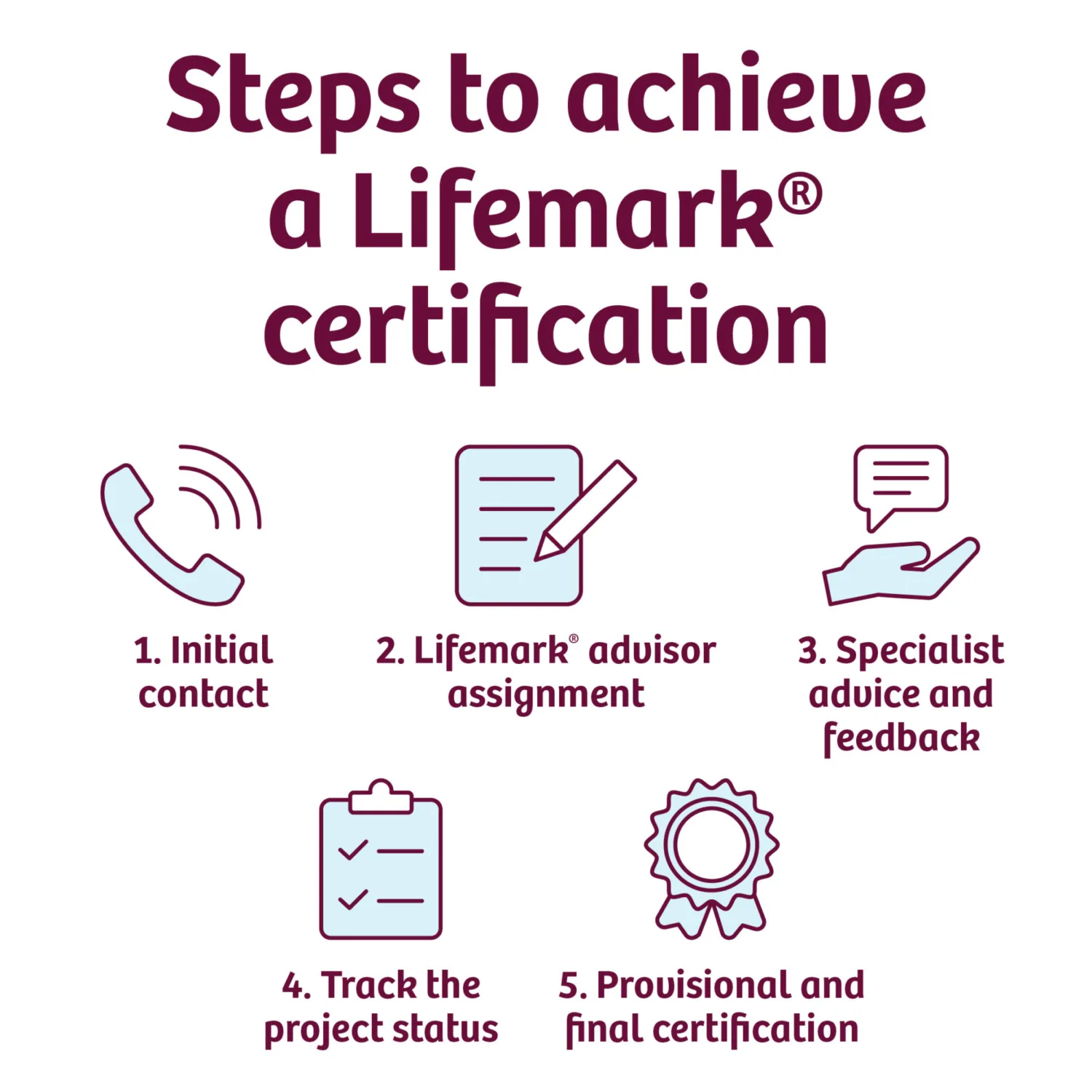How to Achieve Lifemark® Certification
How to Achieve Lifemark® Certification

Are you ready to set your project apart in the market and leave a legacy for housing in New Zealand? A Lifemark® certification provides independent quality assurance that a specific level of Universal Design performance has been reached, making a home easier to live in at any stage in life. Achieving Lifemark® certification is your gateway to creating built environments that cater to everyone.
Whether you're a developer, architect, designer, planner, or homeowner, Lifemark® is here to guide you every step of the way. Let's dive into the process and discover how you can make your project stand out with Lifemark® certification.

1. Initial Contact and Consultation
The journey begins with reaching out to the Lifemark® team. During this initial consultation, you’ll discuss the performance outcomes you aim to achieve. This is a crucial step to ensure that your project aligns with Lifemark® standards and principles.
2. Assignment of a Lifemark® Advisor
Once you’ve established your goals, a dedicated Lifemark® Advisor will be assigned to your project. This advisor will be your main point of contact and will guide you through the certification process. They will review your preliminary plans, detailed drawings, and construction outcomes to ensure compliance with Lifemark® criteria.
3. Ongoing Feedback and Specialist Universal Design Advice
Throughout the project, you will receive continuous feedback and specialist Universal Design and accessibility advice from your Lifemark® Advisor. This support is designed to help you meet the required standards and make necessary adjustments along the way. The advisor’s expertise ensures that your project remains on track and adheres to best practices in Universal Design.
4. Tracking the Project Status
Lifemark® provides a customised Assessment Management System (AMS) to track your project’s status. The AMS offers comprehensive assessment reports and delivers visibility across large, complex projects. This system is instrumental in managing the certification process efficiently and effectively.
5. Provisional and Final Certification
As your project progresses, you can obtain provisional certificates that indicate compliance at various stages. Upon completion, a final certificate will be issued, signifying that your project meets all Lifemark® standards.
Why Choose Lifemark® Certification?
Lifemark® certification adds value by demonstrating your commitment to a high standard of design, created with the future in mind. It provides assurance to stakeholders and end-users that your project is thoughtfully designed to accommodate diverse needs.
Lifemark® offers several levels of performance, each designed to meet different needs. The key certifications are:
- Lifemark® 3: Visitable - Designed for first home buyers, families with young children, structural and spatial design features that enable anyone to visit this place.
- Lifemark® 4: Sustainable Ageing - Future-proofed, adaptable, and designed for changing circumstances that include older people and inter-generational families; this is where you can age in place.
- Lifemark® 5: Accessible+ - Designed for people with greater mobility requirements, such as wheelchair users – a place for independent living.
Achieving Lifemark® certification is more than just a mark of quality; it's a commitment to creating spaces that are future-proof and easy to live in for people at various ages and stages. By following the steps outlined above and leveraging the support of Lifemark® Advisors, you can ensure your project meets the standards of Universal Design and accessibility you require.




